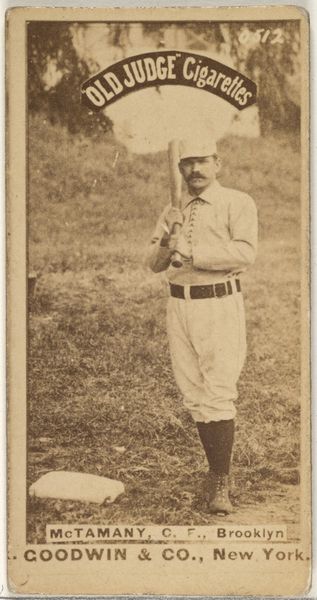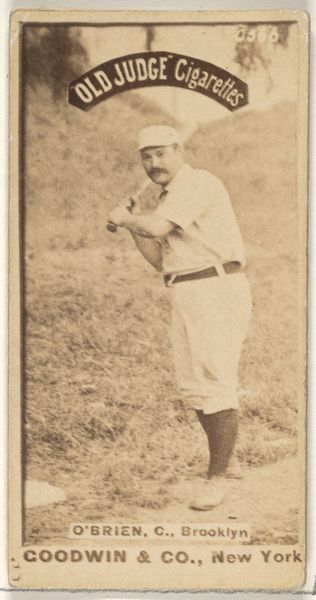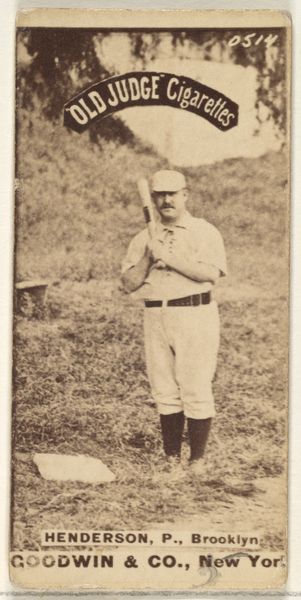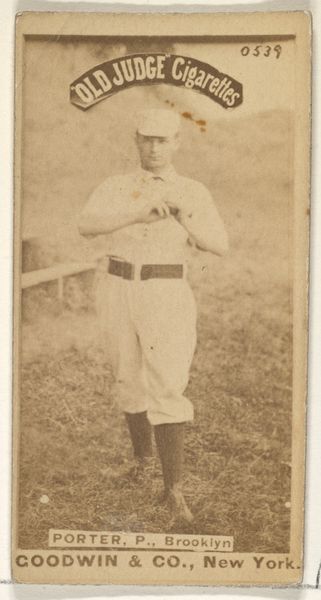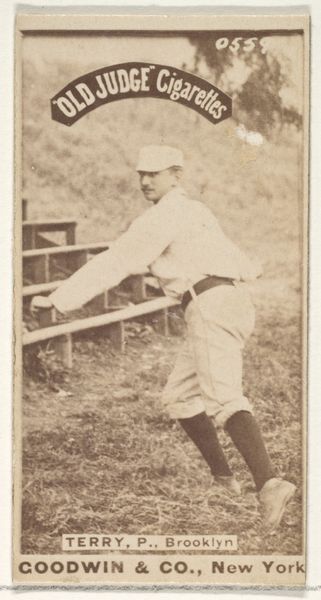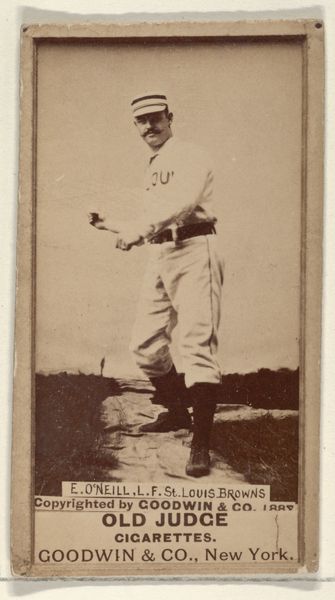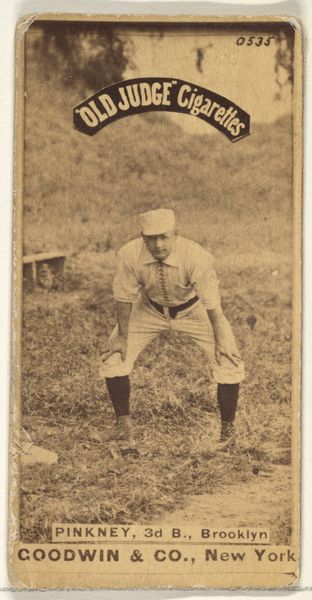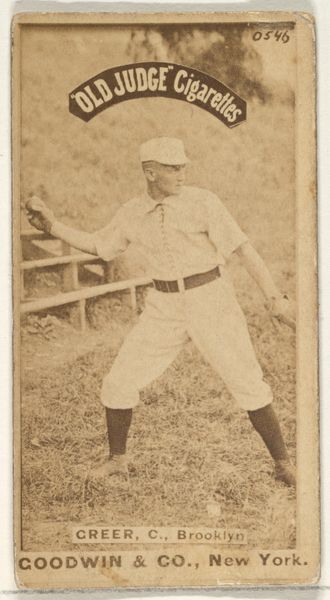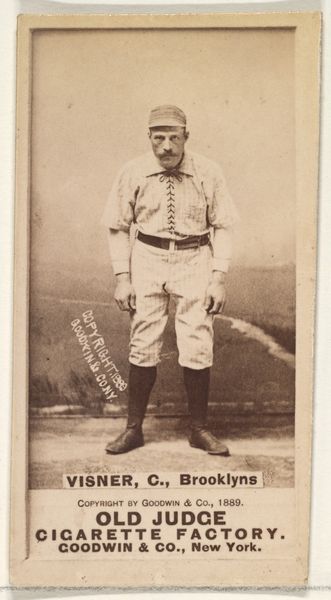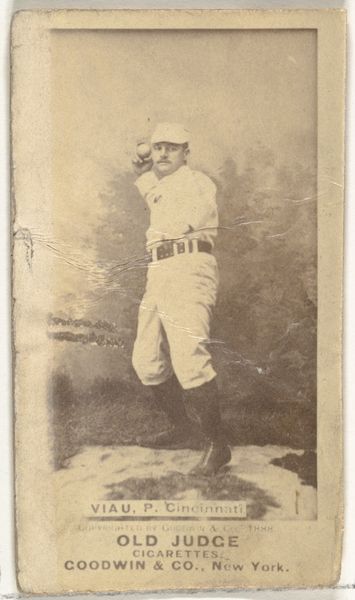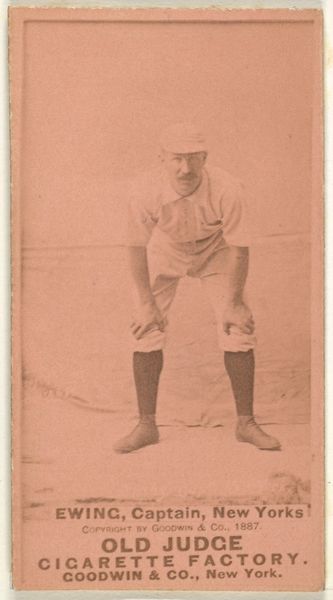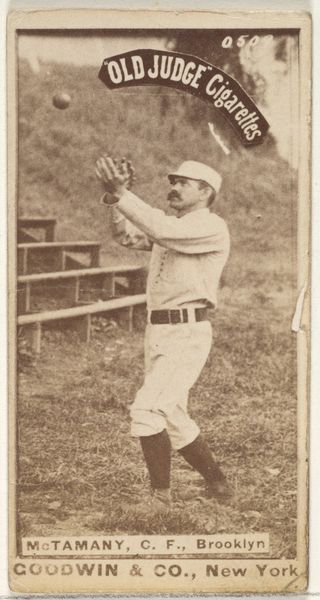
Terry, Pitcher, Brooklyn, from the Old Judge series (N172) for Old Judge Cigarettes 1887 - 1890
0:00
0:00
Dimensions: sheet: 2 11/16 x 1 3/8 in. (6.9 x 3.5 cm)
Copyright: Public Domain
Curator: This small photographic print, created sometime between 1887 and 1890, comes from a series called "Old Judge Cigarettes," published by Goodwin & Company of New York. It's a portrait of a baseball player named Terry, a pitcher for the Brooklyn team. Editor: It’s striking, isn’t it? Even without color, there’s an incredible stillness, almost melancholic, about the image. The subject seems caught in a moment of quiet contemplation rather than the high-energy action we associate with baseball. Curator: It’s a fascinating example of how commercial photography intersected with popular culture at the time. These cards were included in cigarette packs, serving as both a promotional tool and collectible item, subtly shaping perceptions of masculinity and leisure. The branding of "Old Judge" itself evokes a certain respectability and authority. Editor: Absolutely. And if we consider the gendered aspect further, we see these cards performing a specific function—encouraging men to buy cigarettes by associating them with the athletic prowess of baseball players. How does the portrayal of Terry, a white man, contribute to constructing notions of ideal American manhood during that era? What bodies and performances are being deliberately excluded from this narrative of athletic heroism? Curator: The pose, his gaze... he’s presented as an archetype, really. It’s a very formal presentation given that the print appeared inside of a cigarette package. Also consider the distribution of images like this, effectively functioning as an early form of celebrity endorsement. Editor: It feels intensely performative when framed within its history of production and consumption. This little picture also acts as a tangible marker of consumer culture—a seemingly innocuous object infused with power. Curator: Exactly, and understanding this historical context challenges the apparent simplicity of the image. It becomes a window into a specific moment in American history, highlighting the intertwined nature of sports, advertising, and the construction of social identities. Editor: Seeing this, I am reminded again of how the simplest images can hold surprisingly complicated narratives, inviting ongoing scrutiny and conversation about whose stories get told, and why.
Comments
No comments
Be the first to comment and join the conversation on the ultimate creative platform.
